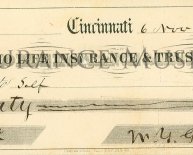
Find my car Insurance Group
- The Group Rating Panel puts vehicles in groups between one (lowest) and 50 (highest) every month after assessing data gathered from Thatcham
- Not all insurers use this rating, but they will use something similar when they assess a vehicle
- The lower the insurance group, the lower your premium is likely to be, but...
The Group Rating Panel is made up of representatives of the insurance industry and meets every month to determine car insurance groups.
It assigns a group number between one and 50 to every model of vehicle. A group one vehicle would be in the lowest insurance group, group 50 the highest.
The main factor used by the panel to determine groupings is research conducted by the Motor Insurance Repair Research Centre (Thatcham).
The categories used to calculate the ratings are:
- Damage and parts costs
- Repair times
- Value
- Availability of body shells
- Performance
- Security
Not all car insurance companies choose to use the groups set by the panel, with some opting to set their own groupings instead. 
But rating factors will be similar and if you use the tool above to find your car's insurance group you'll get an idea of where your vehicle stands in the table.
In our quotes process you can then quickly and easily compare multiple insurance brands to find the right policy at the right price.
Whichever set of insurance groups an insurer uses, you'll typically find that cars in lower groups attract a cheaper premium.
Cars in higher insurance groups attract a higher premium, often because they're high-performance models or prestige cars that have expensive repair or replacement costs.
Bear in mind that making any non-factory-standard modification to your vehicle is likely to override the standard group rating in the eyes of an insurer and there's a good chance that this will make the car more expensive to cover.
It's not all about the insurance group...
Remember that, whatever rating your vehicle has, there may be more significant factors affecting the price of your insurance, such as the profile of the driver and where he or she lives.

















